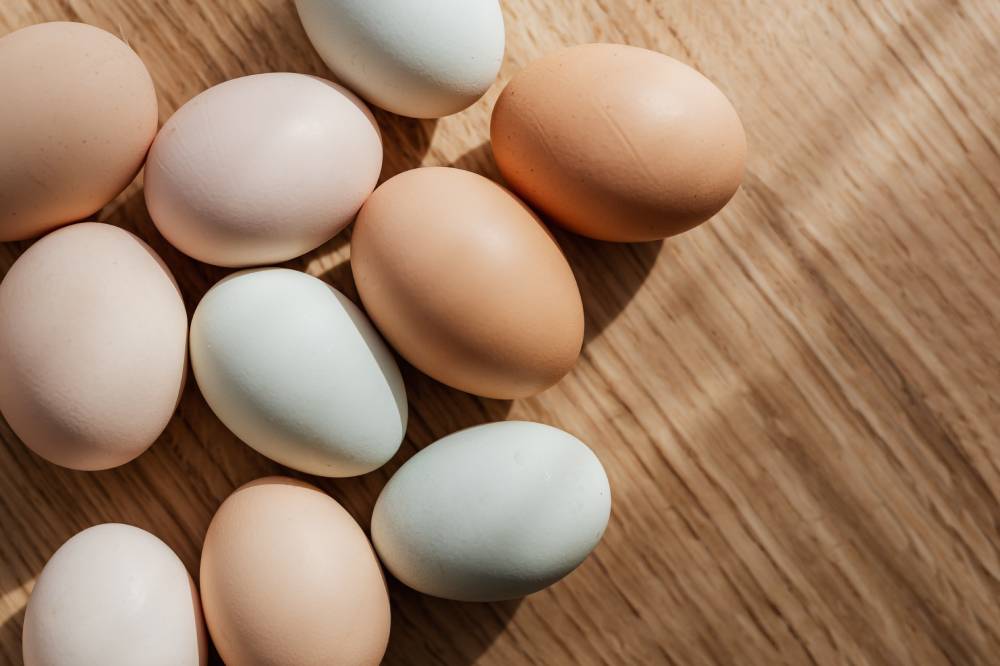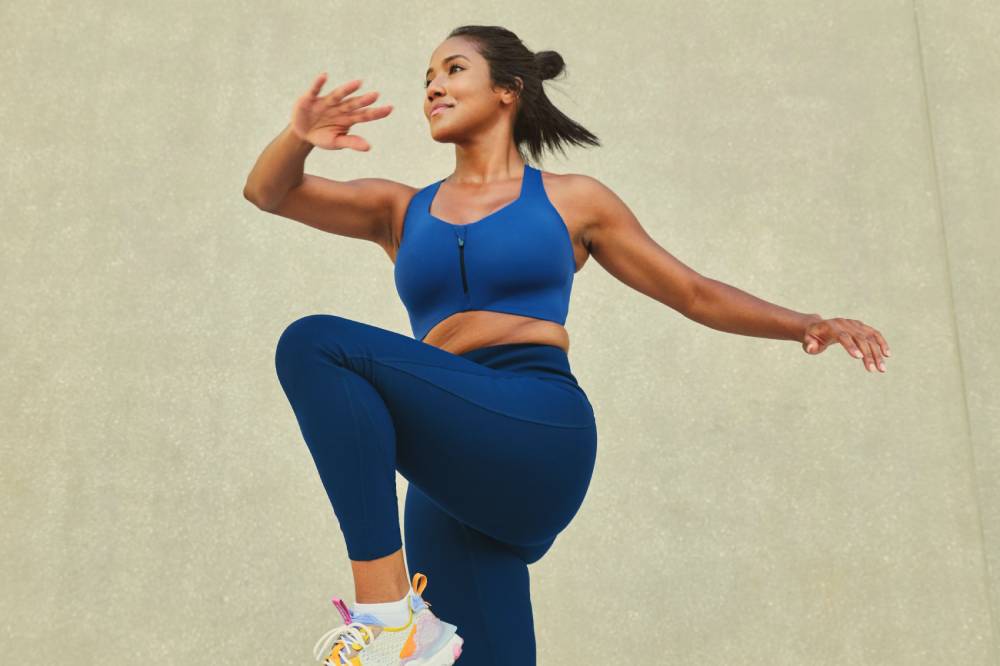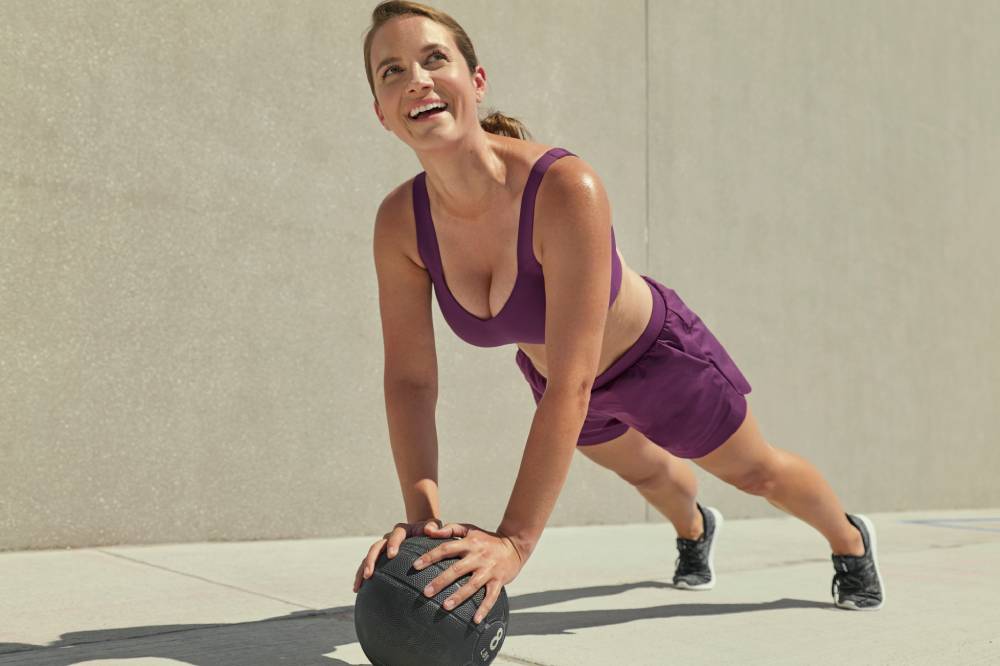What You Need to Know About Fitness and Nutrition During Perimenopause
Eating nutritious foods and engaging in regular movement is recommended throughout all stages of life. Though it’s far from being a revolutionary insight, it’s one that becomes increasingly important in perimenopause and mid-life.
Fitness and women’s health expert, Amanda Thebe, was fit and healthy when she entered her forties. “When I was 42, it all changed,” she tells me.
Having long worked in the health and wellness space, she considered her knowledge of human physiology to be pretty advanced. Still, when she left a workout feeling nauseous, dizzy, and like she’d been “hit with a sledgehammer”—a feeling that went on for months—she never imagined it was symptoms of perimenopause she was experiencing.
“I spent the next two years in the medical wilderness looking for answers,” says Amanda. When her gynecologist identified the source of her ongoing struggles, she had never even heard the term perimenopause.
At first, she was relieved it was nothing serious. “But, then, that relief turned to anger,” she says. “I was furious that something that was considered a natural life transition was happening to me—hurting me—and I had no idea what it was.”
She describes it as a terrible time in her life, but also as transformative and a catalyst for change. She got answers for herself, found new ways to thrive and feel like herself again, and authored a book with all of the insights she gathered, so others could thrive too.
“I had a big knowledge gap, there was a piece of information that was completely a mystery to me and many women,” according to Amanda. “The key to thriving [is] filling that knowledge bucket.”
With help from Amanda’s expert insights, we’re exploring fitness and nutrition as pathways to thriving during perimenopause.
Take Baby Steps
At her lowest, Amanda recalls finding small wins wherever she could—even if it meant going for just a 10 minute walk. “When you’re just not feeling yourself, staying on track with your fitness and nutrition can be very, very challenging,” she says.
What she suggests is doing something over nothing, no matter how small that something may seem. It could be a gentle yoga class or taking the stairs at work, the idea being that these small behavioral changes are impactful and often snowball into continuous healthy habits.
“Just keep taking those steps forward,” says Amanda. “Without judgment and with complete grace, if possible.”
Increase Your Daily Movement
It sounds daunting, but when you’re starting with baby steps, it doesn’t have to be. Creating space for daily movement doesn’t have to be rigorous or time consuming, it can look like getting off the subway a stop earlier or occasionally working from a standing desk.
Amanda refers to this as non-intentional movement—the minute opportunities to expend additional energy that present themselves to us each day. Mundane as they might seem, these moments are possibilities for subtle lifestyle changes that can ease the transition into perimenopause.
Lift Some Weights
With age and being sedentary, muscle and bone mass can begin to reduce—two things that are accelerated through menopause, according to Amanda. “We need to do everything we can to hang onto as much muscle as we can and keep our bones strong,” she says. “And the best way to do that is through strength training.”
If you’re new to strength training, bodyweight exercises are a great place to start. “Test your body and see what it’s capable of—because it’s more capable than you think,” she says.
Twice a week for 30 minutes has the potential to increase lean muscle mass and bone density, as well as improve chances of longevity. “These small changes can help improve our quality of life, and that’s essential as we get older.”
Find Freedom in Food

When it comes to food, Amanda cautions against restrictive diets. Instead, she recommends finding freedom, joy, and celebration in food.
“When you start having awareness [of] the foods you eat without having restrictive rules and morality around food—like this is good, this is bad—we create a response in our body that becomes repetitive,” she says. “It becomes a positive behavior.”
Diet culture is pervasive, especially for women, and inhibiting which foods you eat can seem like a quick weight loss solution. But Amanda emphasizes the importance of sustainable behavioral changes and balanced nutrition as being key to living a full, healthy life.
Increase Your Protein Intake

One thing Amanda does suggest packing into your daily meals? Protein—and lots of it.
She finds women generally don’t consume nearly enough protein, though it’s crucial to building muscle and bone mass. This means diversifying your protein sources, whether it be beans, lentils, or lean meat. Carbs, too, are friends.
“We need to increase our protein sources, and that will keep us full for longer,” she says. “Fill up on loads of vegetables and fruits, carbs are not the enemy.”
Stay Balanced

Like most things in life, nutrition during perimenopause is all about balance. That means loading up on whole food and complex carbohydrates that will fuel your body and brain, while being thoughtful about indulgences like alcohol and overly processed foods.
Everyone needs a treat now and then but the key, according to Amanda, is to plan for it. “These occasional treats have become everyday food items, and that’s not good for our overall health,” she says.
“All of these things apply across our lifespan, they just become particularly important through perimenopause,” says Amanda. “When our body has this inflammatory response to losing estrogen, we need to give [our bodies] the stuff it needs to thrive—and that’s lots of complex carbohydrates and protein, while reducing, not restricting all the fun stuff.”
Consistency Is Key
The foundation of true, sustainable fitness and nutrition goals is affecting behavioral change. The key to this is adapting your lifestyle in a way that feels achievable. “Don’t pick a new change that’s going to be [too] challenging,” according to Amanda.
Whether that means going on a walk everyday or snacking on fruit, form goals that are achievable—and stick with it.
“Change can be very difficult and it can be challenging to go through perimenopause of course, but leaning into that change is the best way to go back to thriving,” she says. “Instead of resistance, actually say, okay, this is meant to happen. It’s a privilege I’m going through this transition.”
—
We hope you found this post informative—but remember: we’re not doctors and this post is not medical advice! While all posts are fact-checked and well researched, we always recommend you chat with your doctor about any questions or concerns you might have regarding a medical condition.
We’re here to support and educate, but never with the aim of disregarding professional medical advice you’ve been given. Phew, now that that’s out of the way, you can go on living unapologetically free.














